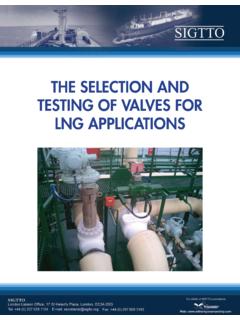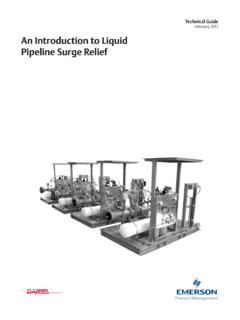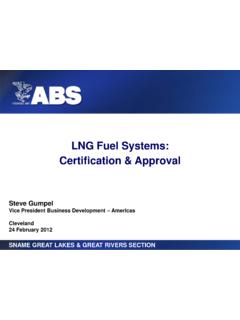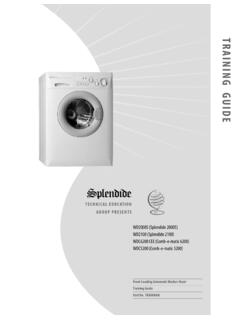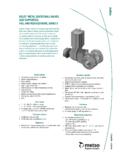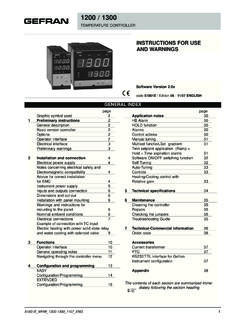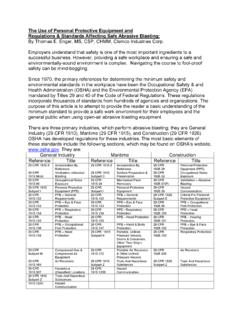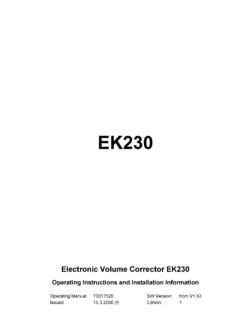Transcription of Bettis PressureGuard Self-Contained Hydraulic …
1 Installation and Maintenance Manual E-90090005 Rev. A. March 2014. Bettis PressureGuard Self-Contained Hydraulic emergency shutdown Systems For Rotary or Non-API 6A Linear Valves Installation and Maintenance Manual Table of Contents E-90090005 Rev. A March 2014. Table of Contents Section 1: Safety Warning 1. Section 2: Introduction General Service Information 2. Definition of Terms 3. Scope 3. Section 3: Storage Instructions 4. Section 4: Operation Manual Mode 6. Automatic Mode 7. shutdown Mode 7. Section 5: Installation 8. Section 6: Maintenance Regular Maintenance 13. Troubleshooting 14. Section 7: Document Revision 16. Appendix A: List of Tables 17.
2 Appendix B: List of Figures 18. Appendix C: List of Drawings 19. Table of Contents I. Section 1:Safety Warning Installation and Maintenance Manual March 2014 E-90090005 Rev. A. Section 1: Safety Warning All personnel involved should read and understand all applicable sections of this manual before attempting to install, operate, service, or perform maintenance on any operators. Adhere to any tags, warning labels, or instructions presented on the operator. These may provide more specific and significant information regarding the operator than this general manual can. It is the responsibility of the user to ensure proper safety. Always take necessary precautions and utilize proper personal protective equipment when dealing with compressed air, compressed Hydraulic fluid, pinch points, and electricity.
3 It is necessary to rig and lift valve and operator separately. Service personnel need to ensure the lifting capacity of the crane/hoist/rigging is appropriate for the desired load. Block the power gas supply and depressurize the system before attempting to install or service. Isolate the power gas from controls if the operator is supplied with control system . Caustic gases and fluids may be contained in the operators and valves in most applications. Vent all poisonous or flammable gases and store all liquids in a safe location to prevent personnel injury. Discharge at sonic velocity may occur when venting or releasing pressure;. service personnel must utilize proper hearing protection.
4 The following are general instructions since there are variations of linear operators and valves. It is critical to install the operator properly so that performance and safety are guaranteed. Any technicians using the following instructions must be trained and knowledgeable regarding valve operators and valves. It is required to go through the above instructions which will help to prevent personnel injury, property damage, and damage to operator. Safety notices (warning, caution, and note) are presented in this manual in three forms: WARNING: If not observed, user incurs a high risk of severe damage to operator and/or fatal injury to personnel.
5 CAUTION: If not observed, user may incur damage to operator and/or injury to personnel. NOTE: Advisory and informational comments provided to assist maintenance personnel to per- form maintenance procedures. Please refer to the applicable section for details and further information. 1 Safety Warning Installation and Maintenance Manual Section 2: Introduction E-90090005 Rev. A March 2014. Section 2: Introduction General Service Information Bettis PressureGuard is a Self-Contained Hydraulic emergency shutdown (ESD) system . It is designed to provide reliable valve shutdown on production wellheads in remote locations where automatic local valve ESD is required, but a power source is not available and/or local supervision is minimal.
6 Available as a complete, tailored-solution, Bettis PressureGuard usually consists of a Self-Contained Hydraulic module, a Hydraulic operator, and application-specific shutdown trigger accessories. PressureGuard systems can be configured for rotary Hydraulic operators for use with ball, plug, and other quarter-turn valves, as well as non-6A. linear-operated valves. A variety of shutdown trigger controls including pressure pilots, solenoid valves, and a temperature-sensing fusible plug are available to suit application requirements. Instructions for installing Bettis PressureGuard system are provided in Section 5. (Installation). Under normal conditions, Bettis PressureGuard maintains the valve in its operational position by resisting the spring force with Hydraulic fluid pressure.
7 In an event requiring automatic ESD valve operation, the PressureGuard employs a control component to shift Hydraulic fluid from the valve operator to an internal reservoir. Without fluid pressure, the compressed spring in the operator moves the valve to its shutdown position. Further information on the operation of Bettis PressureGuard is provided in Section 4. (Operation). Through robust design and quality construction, minimal maintenance is required of Bettis PressureGuard . The ESD system is shipped fully-lubricated and serviced. Depending upon service type, a varying degree of maintenance is required and will be detailed subsequently in Section 6.
8 (Maintenance). Troubleshooting guide is also provided in Section (Troubleshooting) in an unlikely event the ESD system displays a problem. Additional drawings and valve-specific information is provided in Appendix C. (List of Drawings). Introduction 2. Section 2: Introduction Installation and Maintenance Manual March 2014 E-90090005 Rev. A. Definition of Terms The abbreviations included in this IOM manual are listed in the table below: Table 1. Definition of Terms Abbreviated Term Definition IOM Installation, Operation, and Maintenance SCH Self-Contained Hydraulic ESD emergency shutdown GVO Gate Valve Operator Series FS Fail Safe SR Spring Return HP High Pressure LP Low Pressure MAWP Maximum Allowable Working Pressure ID Inside Diameter OD Outside Diameter Scope This manual is a resource for technicians involved in the installation, operation, and maintenance of Bettis PressureGuard .
9 It serves as a guide and must be thoroughly understood prior to any work on the operators such as installation, operation, or maintenance. For any questions, please contact the manufacturer. 3 Introduction Installation and Maintenance Manual Section 3: Storage Instructions E-90090005 Rev. A March 2014. Section 3: Storage Instructions Proper storage is required when the operator will not be used immediately. 1. Remove all dirt, dust, grease, and contaminants from any exposed, unpainted surface (for example, Drive Rod OD, Yoke ID) by using a soft cloth dampened with an appropriate oil based solvent. Avoid using abrasive material when cleaning rod surfaces.
10 2. Lightly grease any exposed, unpainted surfaces. 3. Any plastic plugs used to plug the pressure ports during assembly should be removed and replaced with steel plugs. All controls should also be plugged with steel plugs. NOTE: Sealants such as pipe dope or Teflon tape should be applied to steel plug threads. 4. Lightly lubricate all exposed threads and unpainted surfaces (for example, mounting surfaces). 5. Cover the PressureGuard to prevent accumulation of dirt and debris. 6. Repeat the storage steps listed above to ensure the proper storage condition (in case the PressureGuard will be moved and stored again). Indoor environment is the ideal storage condition for Bettis PressureGuard .










